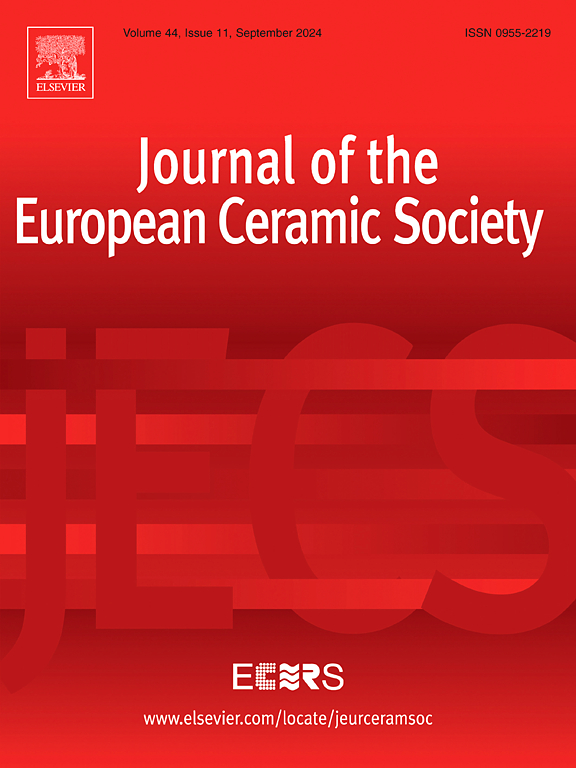Effect of molten NaCl on the wet oxidation behavior of Al2O3-modified SiC-B4C ceramics at 1300 ℃
IF 5.8
2区 材料科学
Q1 MATERIALS SCIENCE, CERAMICS
Journal of The European Ceramic Society
Pub Date : 2025-03-26
DOI:10.1016/j.jeurceramsoc.2025.117396
引用次数: 0
Abstract
In this study, the oxidation properties of Al2O3-modified SiC-B4C ceramics are examined at 1300 ℃ in different atmospheres. The results indicate that an appropriate amount of Al2O3 can repair the glass phase network structure and increase the viscosity of the borosilicate glass phase. This, in turn, inhibits the crystallization of SiO2 and the volatilization of B2O3. However, excessive Al2O3 can damage the network structure of the borosilicate glass phase, leading to a decrease in its viscosity. Al2O3 modification results in reduction of 48.6 % and 55.3 % in oxidized layer thickness after oxidation for 100 h under wet-oxygen and wet-oxygen-NaCl atmosphere, respectively. In addition, Na2O is found to be the primary factor accelerating the oxidation of B4C-SiC in wet-oxygen-NaCl atmosphere. Under both oxidation conditions, the optimal content of Al2O3 is found to be 15 wt%.
求助全文
约1分钟内获得全文
求助全文
来源期刊

Journal of The European Ceramic Society
工程技术-材料科学:硅酸盐
CiteScore
10.70
自引率
12.30%
发文量
863
审稿时长
35 days
期刊介绍:
The Journal of the European Ceramic Society publishes the results of original research and reviews relating to ceramic materials. Papers of either an experimental or theoretical character will be welcomed on a fully international basis. The emphasis is on novel generic science concerning the relationships between processing, microstructure and properties of polycrystalline ceramics consolidated at high temperature. Papers may relate to any of the conventional categories of ceramic: structural, functional, traditional or composite. The central objective is to sustain a high standard of research quality by means of appropriate reviewing procedures.
 求助内容:
求助内容: 应助结果提醒方式:
应助结果提醒方式:


